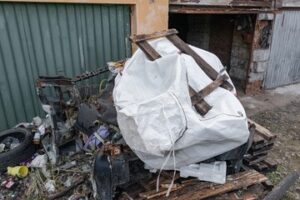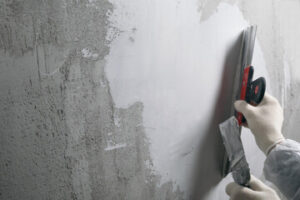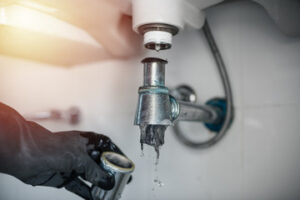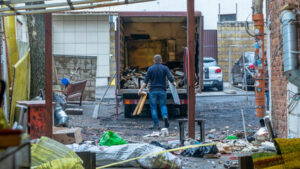Water Heater Installation Denver involves a series of plumbing and electrical tasks. It requires following the manufacturer’s instructions and local code requirements.
Work safely by wearing protective gear and turning off the power supply to the area where you’re working. This will prevent accidents and injuries. You must also wear gloves when handling chemicals.

Water heaters can be a major energy-consuming appliance in the home. If you’re considering upgrading, the best option may be a tankless model that uses gas or electricity to heat the water. These use far less energy than traditional models, and they also don’t consume energy when you’re not using hot water. These models are more expensive to install than tank-style units, but they can offer significant savings over time.
Before starting any work, be sure to disconnect the power source by shutting off the breaker for the heater. It is also important to drain the existing unit and turn off the water supply valve. You can do this by attaching a garden hose to the drain valve on the bottom of the unit and placing the other end over a floor drain or outdoor pipe.
Next, remove the cover from the electrical junction box on top of the unit. Use a volt meter or circuit tester to verify that all of the wires in the unit are off and to check for a green ground wire connected to the incoming power supply. If no ground is present, follow local codes to install one.
Once the new unit is ready, carefully connect all of the electrical connections. This is a simple task for the experienced DIYer, but if you are not familiar with wiring, it may be wise to contact an electrician. During this step, you will need to cut every wire set to length and strip it if necessary. Then push the wires through the appropriate slots on the terminal block. Refer to the product manual for optimal torque, and make sure each wire is securely fastened.
Before reconnecting the water lines, clean all copper fittings. Measure the distance between the water heater and the cold and hot water pipes to determine the length of new piping needed. Then, prepare the pipe assemblies by cutting and soldering two lengths of copper pipe. Thread the galvanized plastic-lined nipples into the cold and hot water inlet openings on the new unit, and screw them tight using a pipe wrench or channel-lock pliers.
Preparing for the Installation
A water heater installation is a big project that requires specific tools. Whether you’re installing a new gas or electric hot water heater, make sure you have the necessary equipment on hand to prevent delays in the project. Some items to consider include a pipe wrench, pliers, pipe cutter, Teflon tape, and a voltage tester. It’s also a good idea to gather any additional supplies that may be needed, such as insulation.
The next step is to prepare the area where the new water heater will be installed. Depending on the location, this may involve disconnecting the existing water supply and gas line. It’s important to be careful during this process to avoid damaging the existing water or gas lines.
Once the existing water heater is disconnected, it’s time to start the new installation. First, remove the old cover from the junction box on the top of the water heater. Then, replace the junction box cover and attach it using the screws provided.
Connect the power wires to the water heater using conduit connectors, if applicable. Ensure that the wires are properly sized to reduce fire and electrical shock risk. Also, be sure to install a new shutoff valve on the cold water line that feeds the water heater. Make sure the valve is rated for potable water.
In the case of gas water heaters, it’s a good idea to use an approved pressure relief valve in the vent line. This will help prevent carbon monoxide poisoning in the event of a leak. It’s also a good idea in general to install an emergency shutoff valve, which is typically located close to the T&P relief valve.
If you’re planning on having a natural gas water heater installed, it’s important to check with your local authority for regulations and requirements. It’s possible that you’ll need to get a permit or have your work inspected by an inspector, which can add to the overall cost of the installation. It’s also a good idea for homeowners to learn about their local building codes and to adhere to them in order to keep their home insurance coverage and avoid issues down the road.
Installing the Water Heater
Whether you’re installing an electric or gas water heater, follow the manufacturer’s instructions. Depending on local building codes, you may need to install a pressure relief valve and a discharge drain pipe. You also will need a drain pan and a new power cord for the heater.
Before starting any work, shut off the water and electricity for your old water heater. Use a neon tester to check for live current and make sure the switch is off at the circuit breaker box. If there’s a lot of sediment in the tank, clean it out using steel wool. Open both hot and cold faucets in an upstairs location to drain the line to the heater. Then connect a garden hose to the water heater drain valve and run it outdoors or into a floor drain.
If you’re removing an electric water heater, take the access panel off the front of the tank to remove the wire connectors and cable clamp. If you’re removing a gas water heater, use a pipe wrench or channel-lock pliers to disconnect the gas line from the heater and the draft hood. If you’re working with plastic piping, such as PEX (cross-linked polyethylene), consult the manufacturer’s manual for specific directions.
Once you have the old water heater removed, install the piping on the new one. If possible, you can use copper piping to make the connections, but most homes have PEX now and you’ll need threaded connectors and a soldering iron that works on PEX. If you’re using copper tubing, make sure it’s rated for high temperature applications.
For a gas water heater, follow the manufacturer’s directions to make the connections to the new gas lines. If you’re venting the gas water heater through your home’s rim joist, use heat-resistant silicone sealant on the vent shaft and slip a stainless steel vent hose over it. If you’re venting the water heater through a chimney, be sure to use a stainless steel vent hose rated for that purpose. For an electric water heater, you can use a copper tubing kit to connect the electrical cables to the heater.
Installing the Gas Line
Gas water heaters are a convenient way to get hot water, but they also pose some safety concerns. Proper installation, inspection and maintenance is essential to avoid property damage or serious injury. You should always use a professional, but it is also possible to do this project yourself. If you are comfortable using power tools and working with plumbing and gas lines, you can safely install a new gas water heater in your home. Before you start, though, read all labels and the printed instructions that came with the heater. Also check with your local department of inspections to see if a permit is required and discuss any special instructions or safety precautions that apply to your area.
Turn off the gas valve at the top of the old water heater and disconnect the electrical cable from the heater by cutting it as close to the breaker box as you can. Drain the water from the tank and remove it, if necessary. If the water heater is in a gas-fired home, you may need to connect the new gas line to the gas control valve. If so, follow the manufacturer’s instructions to do so.
If the gas nipple on the new water heater is different from that of the old one, measure the distance from the gas control valve to the nipple. Buy a new nipple that is the correct length. Apply gas-rated thread sealant or tape to the nipple before you screw it onto the new water heater (Photo 7).
Make all the connections in your gas line according to the water heater’s and manufacturer’s instructions. After you make the connections, run soapy water over all locations where gas might leak to look for bubbles. When you’re done, test the gas line with a gas pressure tester.
You should also install a manual shutoff valve in the cold water line that supplies the heater. This will allow you to turn off the water to the heater in case of an emergency. It is also a good idea to install carbon monoxide detectors in your home. These are particularly important if you have a gas water heater because they give off poisonous carbon monoxide if the pilot light goes out.








